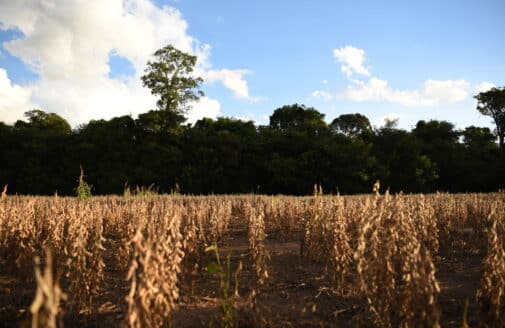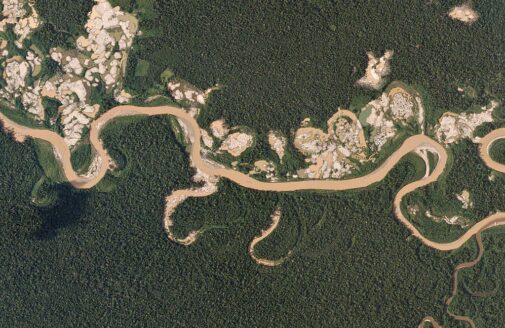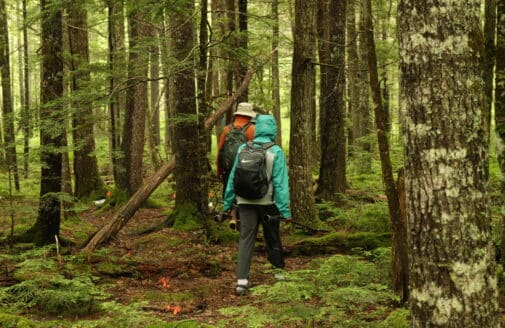Half of the Cerrado is already gone. Here’s what that means for the climate.
A new study quantifies the impacts of converting natural ecosystems to agriculture in Brazil’s Cerrado
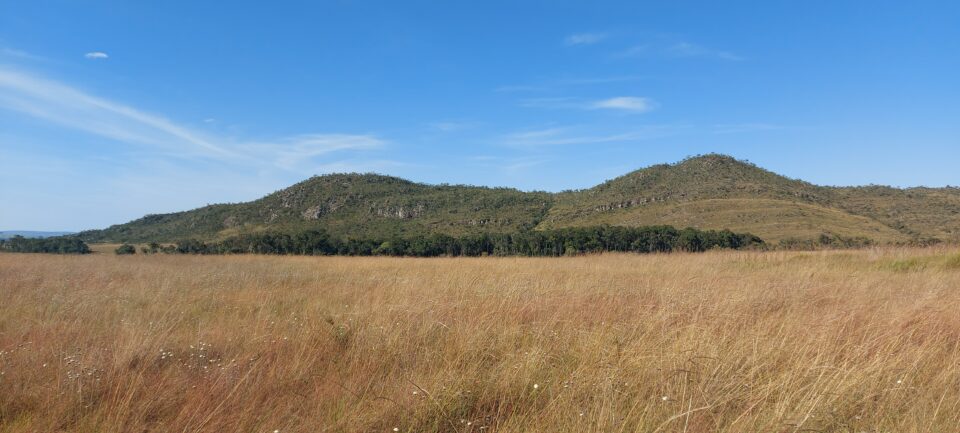
Cerrado grasslands.
photo by Leandro Maracahipes
What’s new?
The Cerrado is a tropical savanna located just southeast of the Amazon rainforest. This biome is a patchwork of forests, savannas, and grasslands, nearly as biodiversity rich as the Amazon yet suffering more due to lax environmental protections. Over 46% of its original land cover has already been cleared for crops or pastures. A recent study assessed the impacts of this conversion on the temperature and water cycling in the region.
The study found that clearing of natural ecosystems resulted in increased land surface temperatures and reduced evapotranspiration—water evaporated to the atmosphere both from soils and as a byproduct of plant growth. Across the biome, land use changes caused a 10% reduction in water being cycled into the atmosphere annually, and almost 1°C of warming. Where native savanna vegetation was cleared, temperatures increased by 1.9°C and the water recycled to the atmosphere decreased by up to 27%. These changes don’t take into account the additional effects of atmospheric warming from greenhouse gas emissions.
The study also projects forward three potential future scenarios based on different levels of environmental protection. The worst-case scenario assumes an additional 64 million hectares of both legal and illegal deforestation, which would leave just 20% of native vegetation in the Cerrado by 2050. If illegal deforestation is prevented but legal deforestation still advances, an additional 28 million hectares of deforestation would continue to warm and dry out the region. Only in the most optimistic scenario, with enforced zero deforestation policies and restoration of over 5 million hectares of illegally cleared vegetation, would the impacts of past clearing begin to reverse.
“If we continue down this path of weakening environmental policies, we’re probably heading towards an uncontrolled increase in deforestation,” says Ariane Rodrigues, researcher at the University of Brasilia and lead author on the paper. “As a result, we could reach almost 1°C of temperature increase by 2050 from land use change alone. If we add the estimated temperature increase from global greenhouse gas emissions, we will have a critical situation for food production, biodiversity, water and wildfire risk, affecting areas located way beyond the biome’s limits.”
Understanding land use in the Cerrado
Incentives for large-scale commercial agriculture in the Cerrado date back to the 1970s. Despite its high biodiversity, only 11% of the Cerrado is protected and technological advancements provided favorable conditions for agriculture to expand rapidly.
The half of the biome that remains unconverted is considered prime agricultural land. The Cerrado alone is responsible for 12% of global soybean production and 10% of global beef exports. Growing demand for these agricultural products is pushing farmers and ranchers to expand into the Matopiba region in the Northeast Cerrado—one of the largest remaining areas of undisturbed native vegetation.
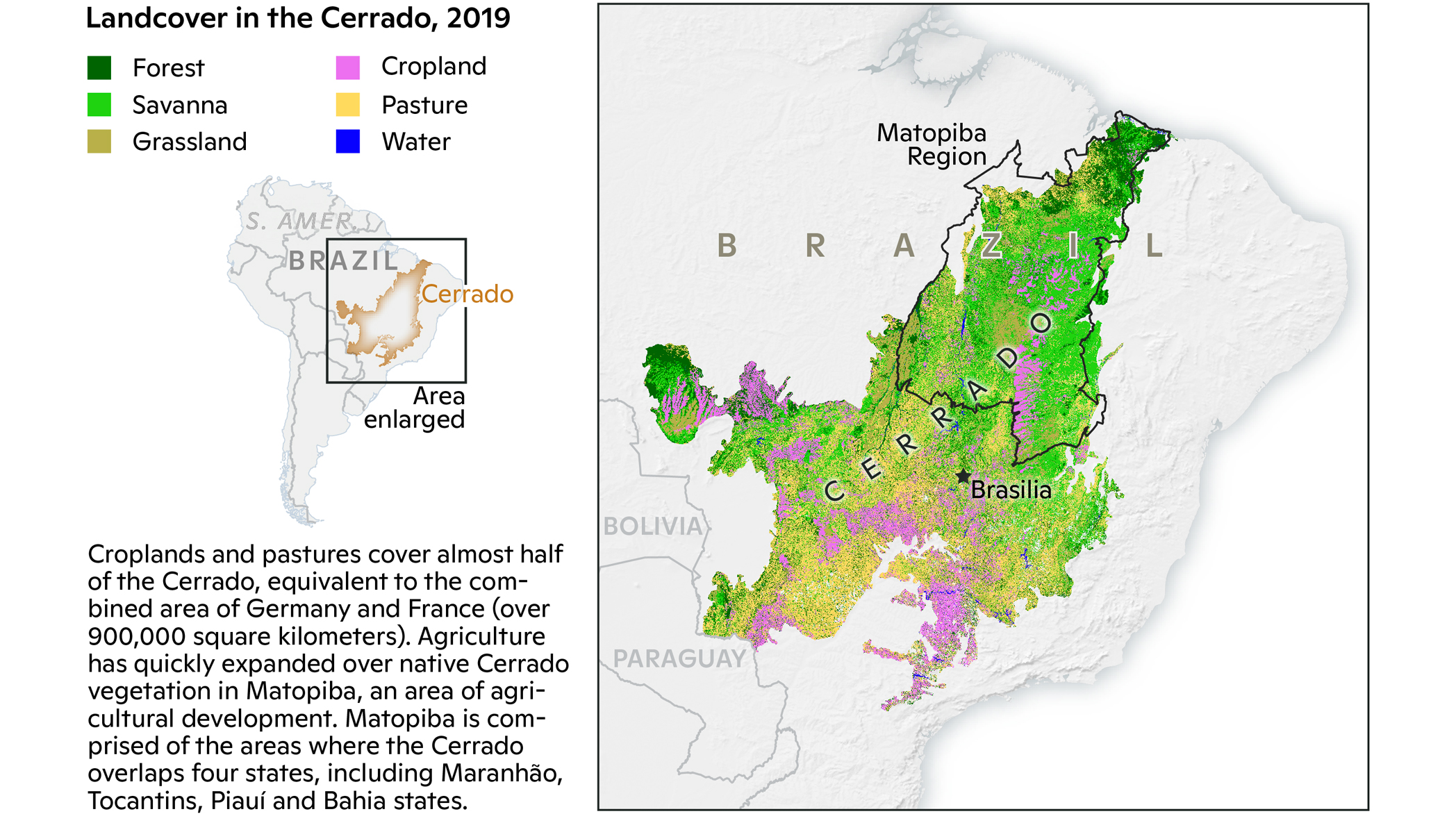
map by Christina Shintani
Hotspots of reduced evapotranspiration and increased temperatures can already be seen in areas of Matopiba with intensifying agricultural activity. This means that farms will rely even more heavily on irrigation to combat drought, a strategy made less viable by the warming and drying caused by agriculture itself.
“That is the driest portion of the Cerrado, where there’s the most climate risk already,” says paper co-author and Woodwell Water program director, Dr. Marcia Macedo. “You can see that in the data—it’s getting hotter, and there’s less evapotranspiration, so we are really intensifying conflicts in areas that are already on the edge.”
What this means for protecting the Cerrado
The results of the paper highlight the urgent need for a paradigm shift that values the additional services the Cerrado provides beyond just crop production. Not only does it house unique ecosystems, but it plays a pivotal role in modulating the climate of the region. In the best-case scenario evaluated by the paper, zero-deforestation and restoration policies could avoid extensive warming and drying and begin compensating for the past transformation of Cerrado landscapes. Continued conversion of natural vegetation will jeopardize both biodiversity and agricultural stability in the Cerrado, as crops struggle to be productive under hotter and drier conditions.
Already, conflicts over water usage and irrigation are occurring in western Bahía state. As the region warms and dries, competition for a scarce resource will become more common and large-scale agriculture will become much less viable.
“We’re making some risky decisions in terms of land use,” says Dr. Macedo, “We’re losing a lot for short term gains in crop production, often in areas that will struggle to sustain large-scale agriculture as climate changes.”




